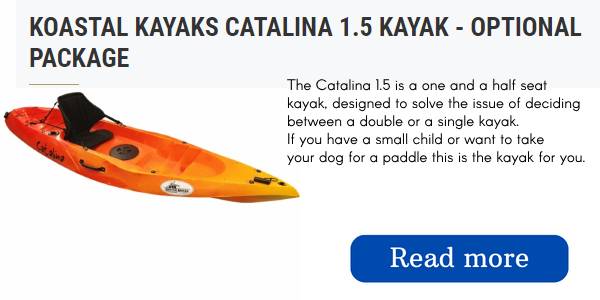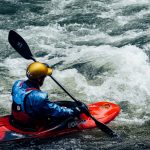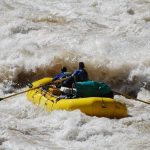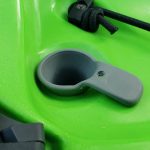It can be hard to squeeze in a full workout into your schedule. Do you really want to spend a lovely Saturday afternoon indoors even when you have the option?
It seems like such a shame to be wasting a perfect afternoon, especially since kayaking is an option.
Yes, before you can voice your thoughts, it still counts as a workout. Yes, using it has the potential to help you reach, and possibly exceed, your desired fitness outcomes.
How many calories does kayaking burn, you ask?
Continue on to get an in-depth look at how kayaking can assist you in losing weight!
Back To Basics: What Is A Calorie?
We ingest them constantly, we consume them – even when we’re just relaxing on the couch – and occasionally, we go through the trouble of numbering and trimming them.
But what are calories, though?
A calorie is a unit of energy. The solution is surprisingly straightforward, yet at the same time, complex. The more accurate, scientific definition of a calorie would be:
The energy needed to heat up 1 gram of water by 1 degree Celsius.
All the processes happening inside a body at the cellular level must have energy in order to keep living and work properly. We obtain energy from the meals we consume, and as you are aware, calories are what makes up the food.
In terms of nutrition, calories indicate the energy that we receive from eating, the nutrition that our food contains, and, how our body utilizes that energy for physical activity during our normal daily tasks.
However, things get complicated when we speak about nutrition – we are referring to kilocalories, which consist of 1000 of the so-called “minute” calories.
What Affects How Many Calories Burned Kayaking?
Since you have come here to learn how many calories you can burn from kayaking, I’m assuming that you would like to lose the weight you gained during quarantine.
Well, here’s your first lesson in weight loss:
You must expend more calories than you consume to produce a caloric deficiency large enough to guarantee consistent weekly weight loss of 1 pound.
It is impossible to evaluate if you have a calorie shortage unless you are aware of how much energy you expend each day or when you workout.
And that is a lot trickier than it seems. It is basically inconceivable to give precise figures since they depend on numerous variables. A few factors are not something that can be determined by you and are just matter of luck, usually referred to as the “genetics lottery”. On the other hand, some can be influenced.
Here are some of those factors that will affect how many calories you burn kayaking:
- Age – The older the paddler gets, the fewer calories their body burns. That’s because, as you age, your body composition changes, and you start losing muscle mass.
- Sex – Males and females burn calories at different rates. Men burn more calories, even at rest. Why? They tend to have less body fat – and more muscle mass – than women.
- Weight – The more you weigh, the more calories you’ll burn. In essence, an overweight person will burn more per session than a kayaker of average weight.
- Body Composition – Remember what I said about why men burn more calories than women? That’s body composition at play right there. Bodies with more lean muscle mass are more efficient at burning calories.
- Exercise Intensity – The more intense the activity and the higher your heart rate, the more calories you burn. There’s a pretty big difference between chilling in your ‘yak and putting serious effort into paddling.
- Exercise Duration – Now, this one is a matter of simple math. The longer you do it, the more calories you’ll burn. That’s as true for kayaking as it is for any other form of exercise.
How Many Calories Does Kayaking Burn?
How many calories you shed while kayaking is contingent on your body weight and body structure. Both genders typically have different rates of calorie burning, so this should be taken into consideration.
Typically, kayaking with a regular intensity can cause an individual to burn somewhere between 260 and 560 calories per hour depending on the amount they weigh. The fewer pounds you weigh, the fewer calories your body will expend.
The heavier your weight, the higher your calorie burn rate will be. Males generally consume more calories than females with the same measurements of height and weight.
Calculating Calories Burned Kayaking Per Hour
In order to determine the number of calories utilized during an activity, it is essential to be aware of the metabolic equivalent of task (MET). This is how much oxygen is used by the body when it is not active.
One MET is equal to 3.5 milliliters of oxygen for each kilogram of body weight times the duration of the activity.
The intensity of activities can be divided into three categories: light, moderate, and vigorous. The harder you paddle when kayaking, the greater the MET rate will be and the more calories you can burn in one minute.
- Kayaking at light intensity (around 2 mph) is 2.8 METs.
- Kayaking at moderate intensity (around 4 mph) is 5.0 METs.
- Kayaking at vigorous intensity (>6 mph) is 12.5 METs.
To figure out how many calories you expend, you should multiply the MET value by your weight in kilograms, then multiply the answer by 3.5. Take 200 as the denominator and that will result in the quantity of calories burned per minute. To figure out how many calories you can burn per hour, take this result and multiply it by sixty.
Calculation:
- MET x weight (kg) x 3.5 ÷ 200 = calories per minute.
- Calories per minute x 60 = calories per hour.
An example calculation, based on an average American man’s weight of 200 pounds (90.7 kg), kayaking at a moderate pace is:
Five times ninety point seven times three point five divided by two hundred equals seven point ninety-four calories per minute, or four hundred seventy-six calories per hour.
For someone weighing 97 pounds (44 kg), this would equate to: 5 multiplied by 44 multiplied by 3.5 divided by 200, equalling 3.85 calories in a single minute or 231 calories in one hour.
If someone who weighed 200 pounds kayaked at an average speed, they could expect to burn around 119 calories every mile. For the person paddling who weighs 97 lbs, it will likely take burning about 58 calories for each mile if they are paddling at a normal speed.
However, this does not apply to all people in the same way, since males usually have a greater capacity to burn calories due to higher percentages of muscle mass and females have higher body fat ratios.
The amount of calories you eliminate can be impacted by your level of physical fitness. One individual’s light effort might be viewed as a strenuous endeavor for someone else.
An illustration of this is, if you are engaged in physical activity such as running, the more conditioned your body is, the less effort it will require in order to keep up the same speed, unlike somebody who is out of shape or very elderly.
Table: Calories Burned Kayaking Vs. Other Activities
| Activity | Calories Burned Per Hour (based on a 150-pound person) | METs |
| Kayaking | 200 to 893 | 2.8 to 12.5 |
| Paddle boarding | 428 (moderate pace) | 6.0 (moderate) |
| Swimming | 305 to 985 | 5.0 to 13.8 |
| Jogging | 500 | 7.0 |
| Cycling | 286 to 1142 | 4.0 to 16.0 |
| Yoga | 143 | 2.0 |
If that’s not reason enough to take up kayaking as a form of low-impact cardio, consider this:
Instead of exercising on a treadmill indoors, you’ll be getting your workout outdoors in the natural environment. And no two sessions will ever be the same.
Is Kayaking A Good Form Of Exercise?
The fact that you’re even asking something like that tells me one of the following is true:
You’ve never gone kayaking before. Alternately, you have been kayaking – mostly a leisurely experience in which you floated down a river.
Either way, you didn’t really go kayaking. If you had tried it, you would understand that it provides a thorough exercise for the entire body.
Kayaking, when done properly, can be an intense workout – it works out all the major muscle groups from the top of your head to the tips of your toes, not only your arms as some people mistakenly think.
When it comes to the body muscles that kayaking works, prepare to be amazed:
- Back muscles, including your lats, rhomboid muscles, and trapezius muscles
- Shoulder muscles, primarily the deltoids
- Biceps and triceps
- Forearm muscles
- Chest muscles, or pectorals
- Core muscles, primarily abdominals, and obliques
- Leg muscles and glutes
Kayaking is not only a great activity to stay in shape while minimizing stress on your body, but it also has positive mental and physical benefits that are worth noting.
Seriously, here are a few other reasons to take up kayaking – besides burning calories, that is:
- It contributes to a reduced risk of cardiovascular disease.
- It’s highly adaptable and inclusive; pretty much everyone can find a way to enjoy kayaking.
- It’s an excellent way to combat vitamin D deficiency; all it takes is 15 to 20 minutes out in the sun, and your body does the rest.
- It makes for an effective stress-management method, helping you clear your mind and enter a stress-free, almost meditative state while you’re on the water.
- It triggers the release of natural mood-enhancing chemicals like endorphins, dopamine, and serotonin- which can have a positive mental health benefits
- It makes a difference in your confidence and how you perceive yourself – and what you are capable of achieving.
- It’s a chance to meet lots of like-minded, water-loving individuals. Join a local paddling club, and you’ll make some life-long friends.
Does Kayaking Count As Cardio?
When pondering cardiovascular exercises, running and the utilization of a treadmill usually come to mind – however, remaining in a small vessel made of plastic, otherwise known as a kayak, can be considered a cardio workout as well. It’s unlikely that that type of activity would enter your thoughts when you think about exercising to get your heart rate up, right?
That’s where you’re wrong.
It takes a great deal of effort to push a boat through the water – and in reality, rowing is an activity that works the whole body, not just the arms as some misunderstand. All the muscle groups in your body – including your back, abs, legs, glutes, chest and shoulders – will be given a quality workout.
Grab your paddle and go kayaking faster! You’ll find that there’s an intense, exhilarating side to the sport when you go the extra mile.
Can You Build Muscle When Kayaking?
Canoeing allows you to exercise quite a few muscle groups in your body. This means you can build muscle while kayaking. Kayaking contains elements of both cardio and strength exercise, so it would be unlikely for you to gain muscle mass.
Engaging in kayaking consistently will build your muscles and increase their strength.
Kayaking mostly uses the muscles in your upper body. However, it additionally exercises the abdominal and lower body muscles, since you need to use your middle section for maintaining stability and revolving with every paddle thrust.
When kayaking, the arms, core, and back are utilized, making use of the biceps, triceps, abdominal muscles, and latissimus dorsi (lats). Nevertheless, your thigh muscles, back of thigh muscles, shoulder muscles, lower legs muscles, and buttocks muscles are also involved in kayaking.
Going kayaking regularly will give your muscles a workout and increase muscle tone, even when you take it slow. As your muscles grow stronger, you will be able to burn more calories.
If you are a beginner at kayaking, it is likely that your muscles will be sore after your initial outing. You may observe changes in your muscle strength faster than someone who is an experienced paddler. Someone who uses a paddle often will probably have well-developed and toned muscles.
Strength Training
Although kayaking alone won’t result in significantly larger muscles, you can enhance your muscle power and build muscles if you add strength training to your regular exercise program.
Developing the power of your muscles during other activities can be advantageous when you go kayaking. This could lessen your chances of being hurt, as it will fortify your muscles. Decreasing your chances of getting hurt enables you to stay on the water for extended periods of time, leading to better paddling proficiency.
Enhanced muscular endurance may result in faster paddling and more strength.
Boosting the power of your core muscles in the gym can aid in augmenting your display in the water. Workouts involving weights and medicine balls can be beneficial, as well as stretching out muscles which are used regularly.
How Do You Gain Stamina For Kayaking?
Looking to improve your kayaking performance and last longer on the water? Developing stamina is essential. In this article, we’ll explore effective ways to boost your endurance and build the strength necessary for kayaking.
First and foremost, it’s important to engage in regular physical activity outside of kayaking to build overall fitness. This can include cardio exercises such as running, cycling, or swimming, as well as strength training exercises such as weightlifting or resistance band workouts.
Another crucial aspect is practicing proper technique when paddling. This involves maintaining good posture, using the correct paddling motion, and conserving energy by not overexerting yourself. Consistently practicing good technique will not only improve your performance but also prevent injury.
In addition, incorporating interval training into your workouts can be highly beneficial for building stamina. This involves alternating periods of high-intensity exercise with periods of lower intensity or rest. Interval training can be done both on and off the water, and can help improve cardiovascular endurance and overall fitness.
Finally, be sure to give your body ample time to rest and recover between workouts. Overtraining can lead to injury and actually hinder progress, so it’s important to listen to your body and take breaks when needed.
By incorporating these tips into your routine, you’ll be well on your way to building the stamina necessary for successful kayaking sessions.
Gradually increase the paddling distance
Starting a new physical activity, such as kayaking, requires a gradual and progressive approach. Just like preparing for a marathon, you wouldn’t run the full distance on your first training session. The same principle applies to kayaking. To build your stamina and endurance for long-distance paddling, it’s essential to gradually increase the distance you paddle in each training session.
One effective strategy is to increase the number of paddling sessions per week at the beginning, and then incorporate a longer-distance paddle towards the end of the week. This allows your body to adapt to the increased frequency of training while building up your endurance gradually. As your body becomes more accustomed to the training, you can gradually increase the distance covered each week.
It’s crucial to listen to your body throughout the training process and avoid overexertion. It’s better to progress gradually than to push too hard too soon, which can lead to injury and setbacks. Building up gradually can also help prevent burnout, allowing you to stay motivated and consistent in your training.
Paddles Up! in Conclusion
Canoeing is a great way to have a blast outside while getting fit and torching calories.
Kayaking is a great activity that can be tailored to suit all fitness levels; you can have a chilled out paddle or use it to help build up your cardio endurance.
If you increase the speed and intensity of your kayaking, you will burn more calories.
It is important to recall that your endurance and muscle power can be increased by participating in extra workouts and practicing on land, which can better your complete paddling expertise.




